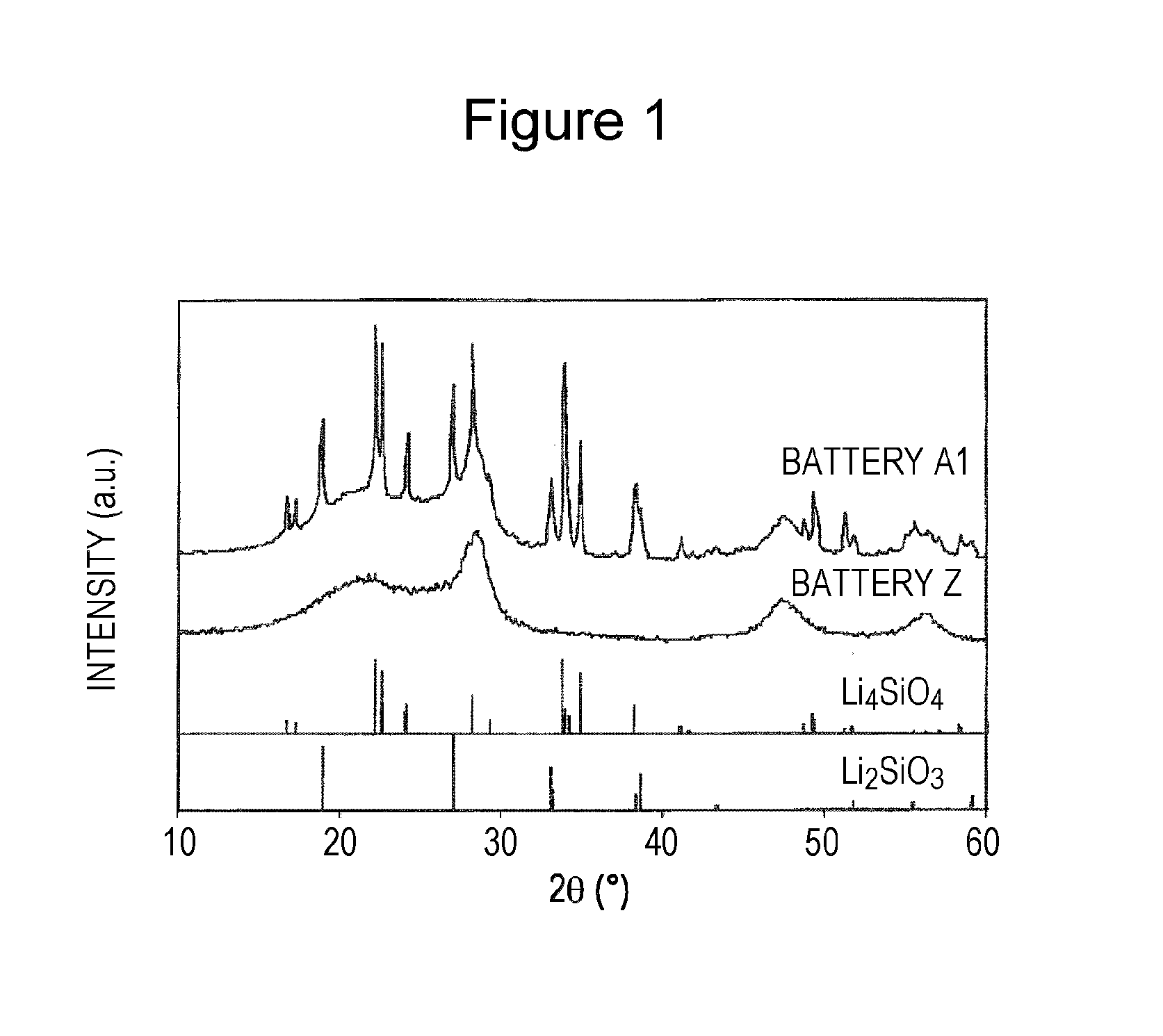Negative electrode active material for non-aqueous electrolyte secondary batteries and non-aqueous electrolyte secondary battery using negative electrode active material
- Summary
- Abstract
- Description
- Claims
- Application Information
AI Technical Summary
Benefits of technology
Problems solved by technology
Method used
Image
Examples
examples
[0042]The present invention is further described below in detail with reference to specific examples. The present invention is not limited to the examples below and can be appropriately modified without departing from the scope of present invention.
first example
Example 1
Preparation of Negative Electrode
[0043]SiOX (X=0.93, an average primary particle size of 5.0 μm) of which the surface was covered by carbon was prepared. Incidentally, covering was performed by a CVD method. The proportion of carbon to SiOX was 10% by mass. The carbon coverage of the surface of SiOX was 100%. One mole of SiOX and 0.2 mol of LiOH were mixed together in a powdery state (the proportion of LiOH to SiOX was 20 mole percent), whereby LiOH was applied to the surface of SiOX. Next, heat treatment was performed at 800° C. for 10 hours in an Ar atmosphere, whereby a lithium silicate phase was formed in SiOX. Heat-treated SiOX was analyzed by XRD (the radiation source is Cu Kα), whereby peaks corresponding to Li4SiO4 and Li2SiO3, which are lithium silicates, were observed as shown in FIG. 1. The number of moles (hereinafter referred to as the percentage of the lithium silicate phase in SiOX) of the lithium silicate phase to the number of moles of SiOX was 5 mole perce...
second example
Example 1
[0059]A battery was prepared in substantially the same manner as that described in Example 1 of the first example except that 2 mole percent of LiOH was added to SiOX when LiOH and SiOX were mixed together and were heat-treated. Incidentally, heat-treated SiOX was analyzed by XRD, whereby a peak corresponding to Li2SiO3, which is a lithium silicate, was observed. The percentage of a lithium silicate phase in heat-treated SiOX was 0.5 mole percent. The battery, which was prepared as described above, is hereinafter referred to as Battery B1.
Example 2
[0060]A battery was prepared in substantially the same manner as that described in Example 1 of the first example except that 50 mole percent of LiOH was added to SiOX when LiOH and SiOX were mixed together and were heat-treated. Incidentally, heat-treated SiOX was analyzed by XRD, whereby peaks corresponding to Li4SiO4 and Li2SiO3, which are lithium silicates, were observed. The percentage of a lithium silicate phase in heat-trea...
PUM
 Login to View More
Login to View More Abstract
Description
Claims
Application Information
 Login to View More
Login to View More - R&D Engineer
- R&D Manager
- IP Professional
- Industry Leading Data Capabilities
- Powerful AI technology
- Patent DNA Extraction
Browse by: Latest US Patents, China's latest patents, Technical Efficacy Thesaurus, Application Domain, Technology Topic, Popular Technical Reports.
© 2024 PatSnap. All rights reserved.Legal|Privacy policy|Modern Slavery Act Transparency Statement|Sitemap|About US| Contact US: help@patsnap.com








